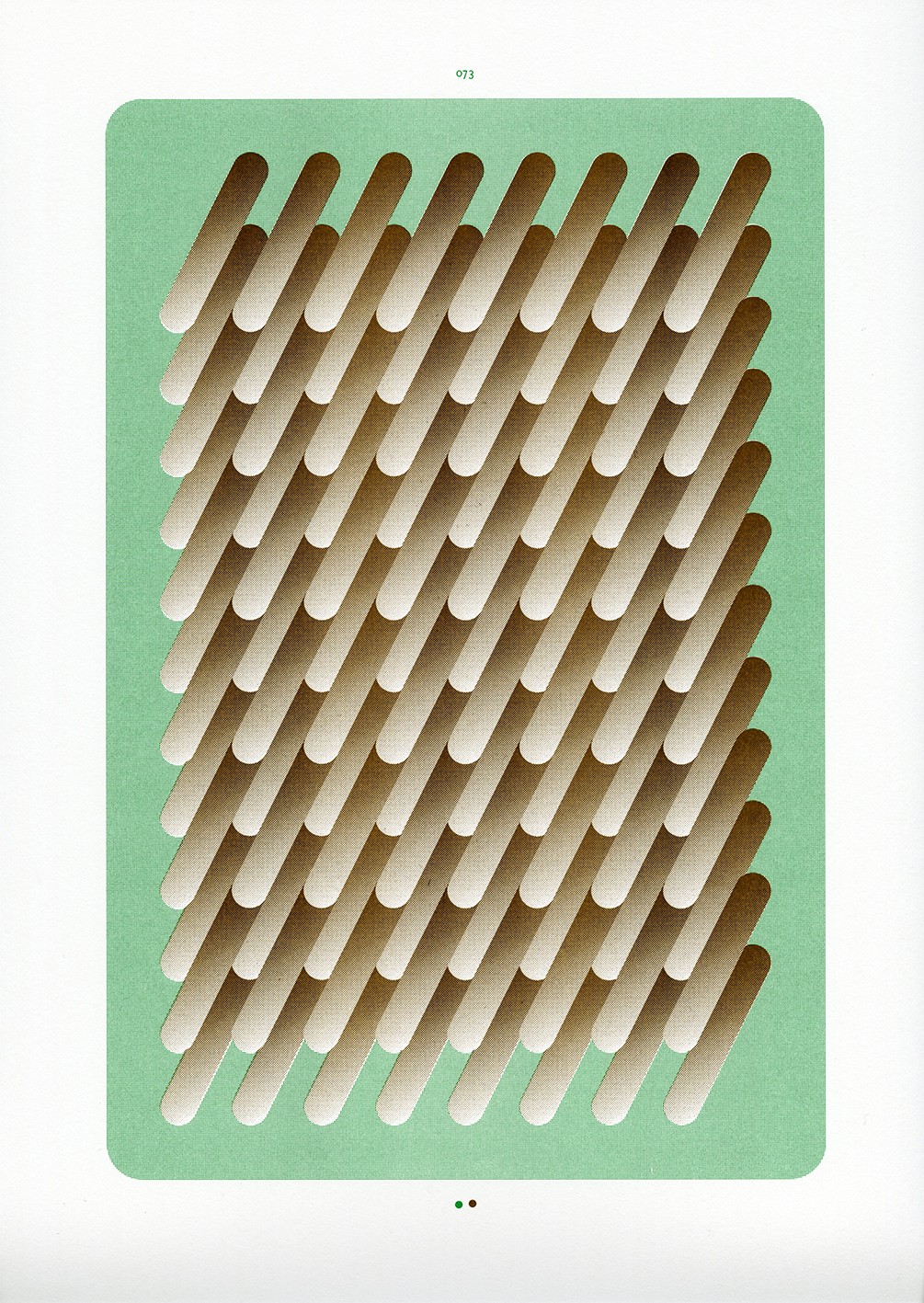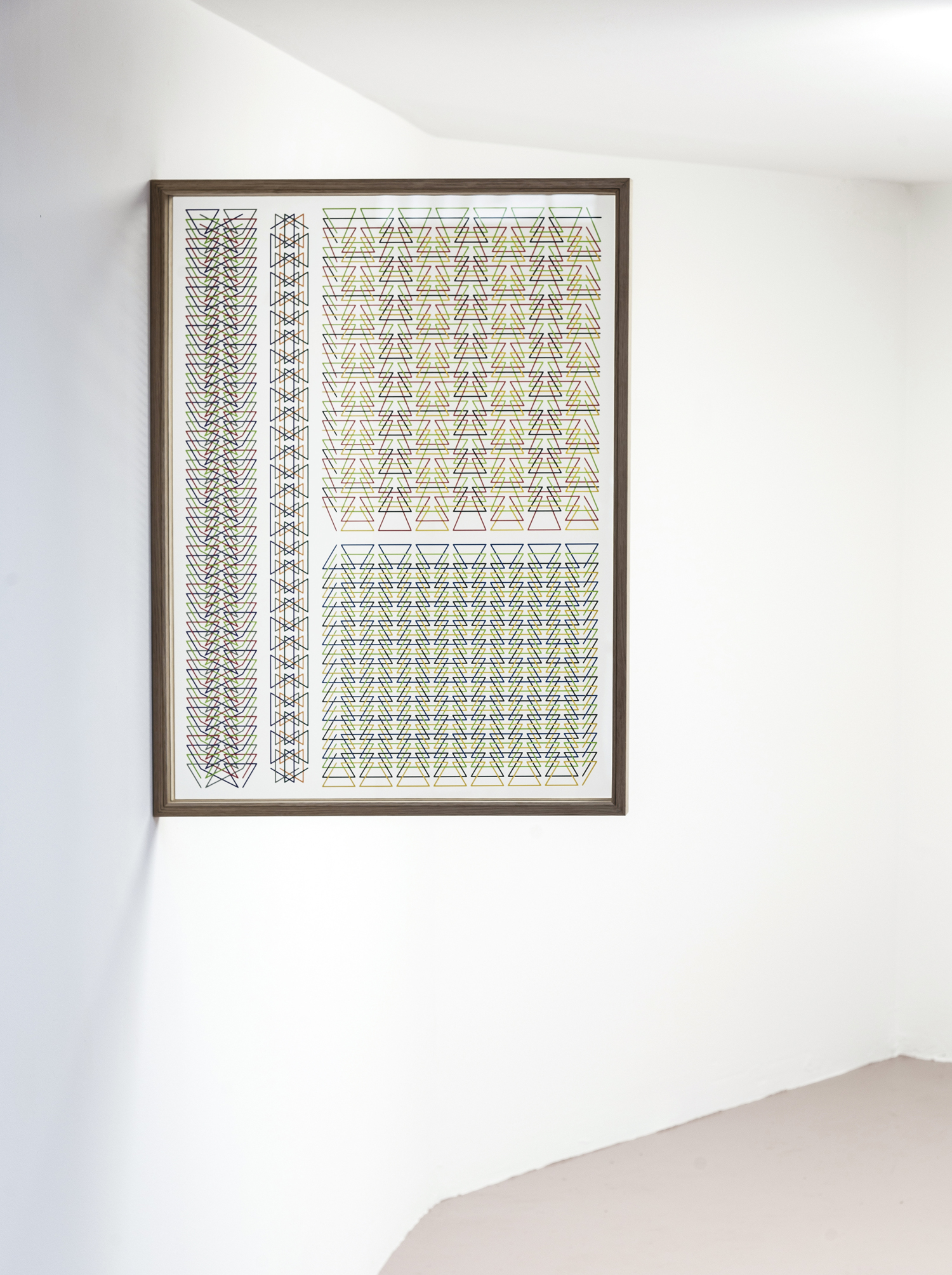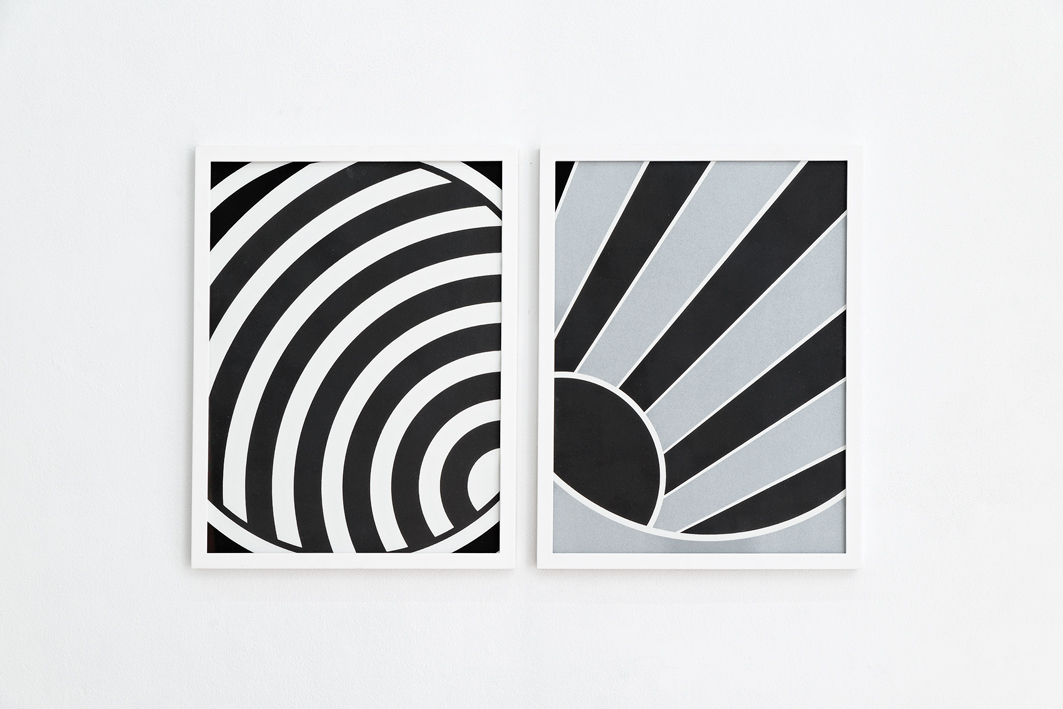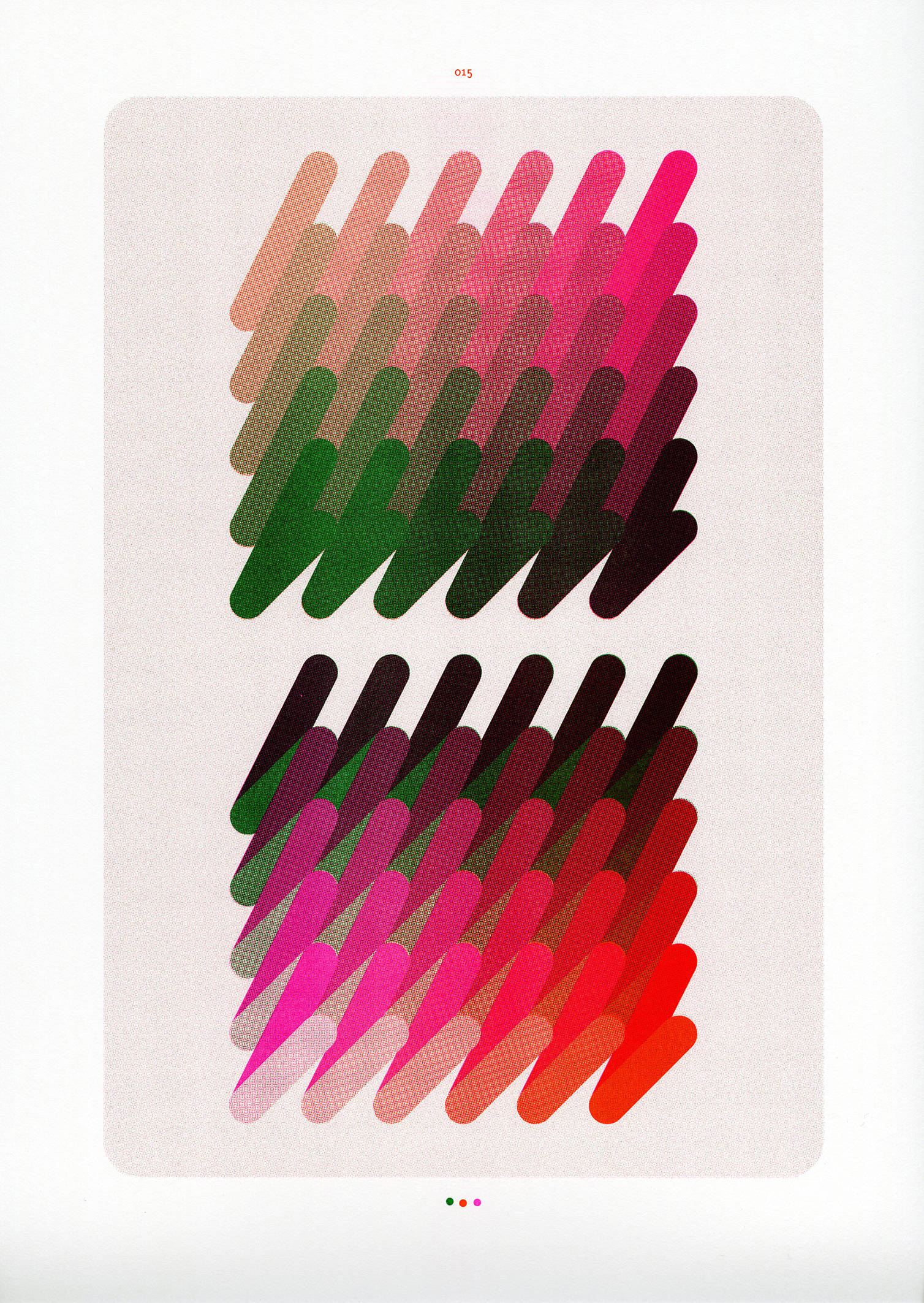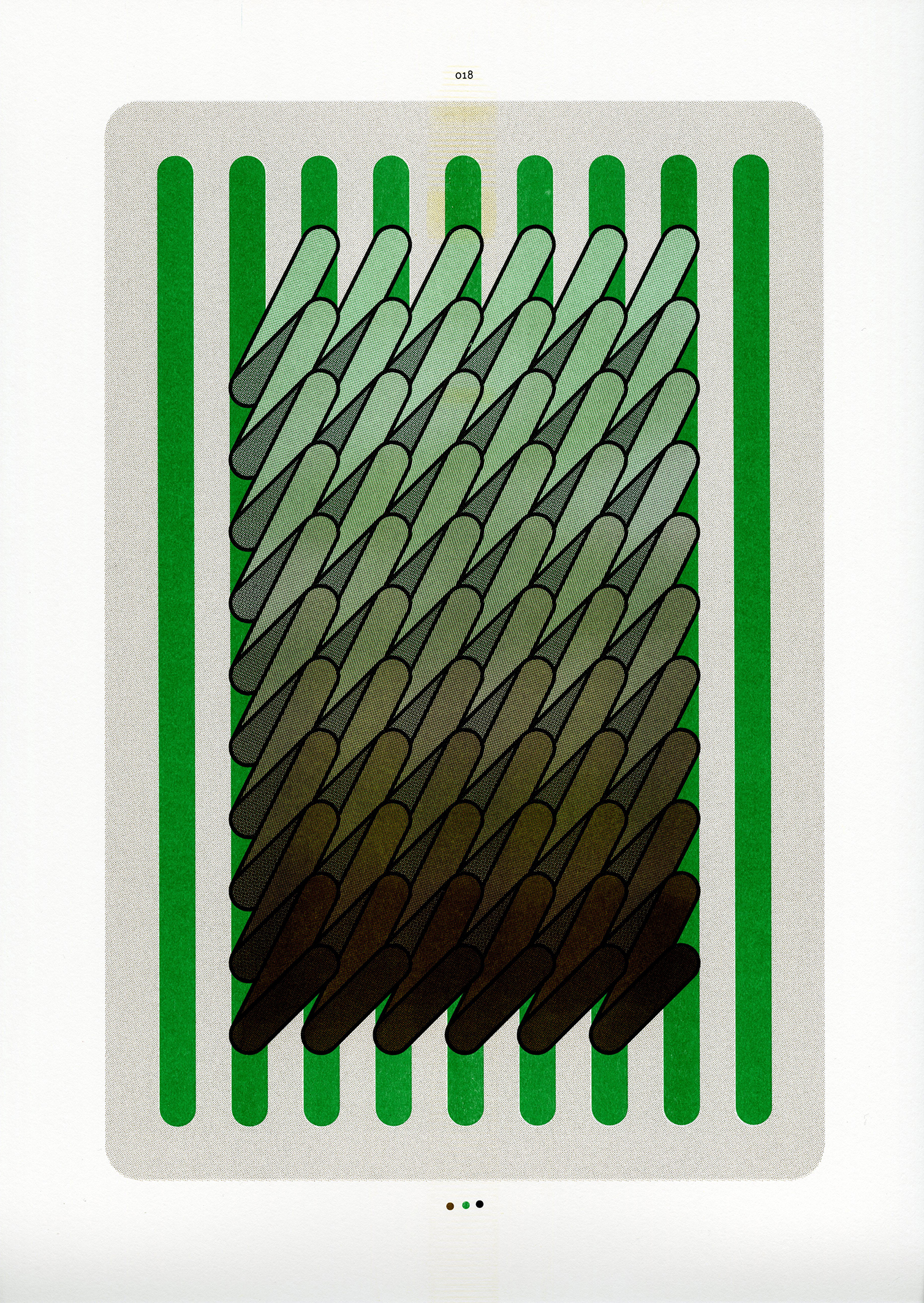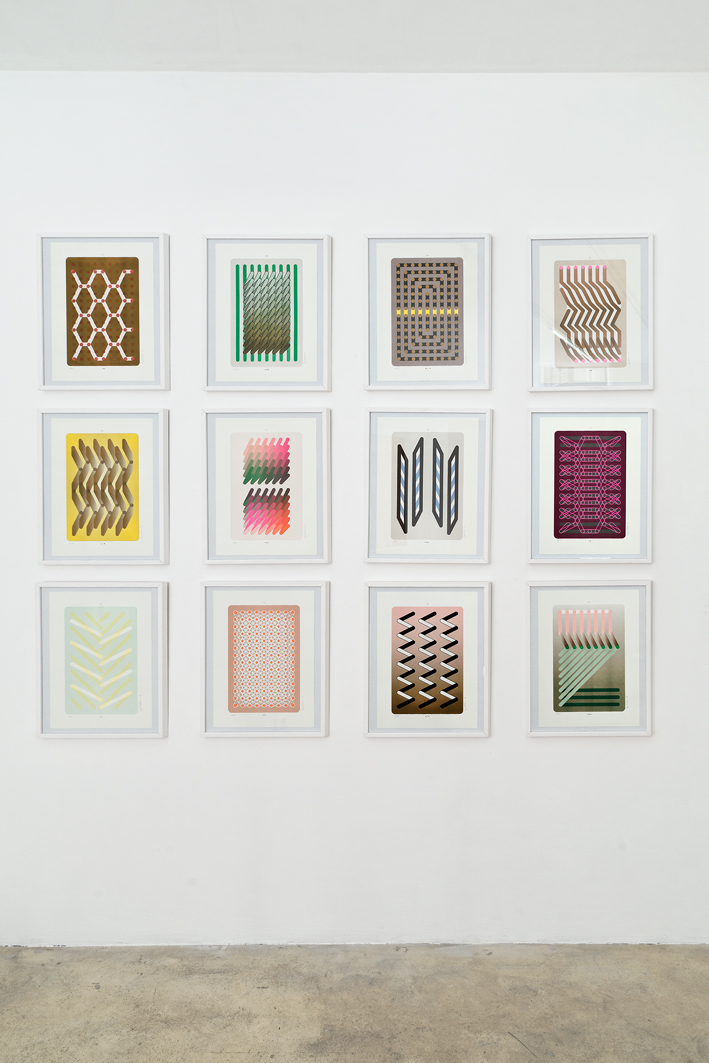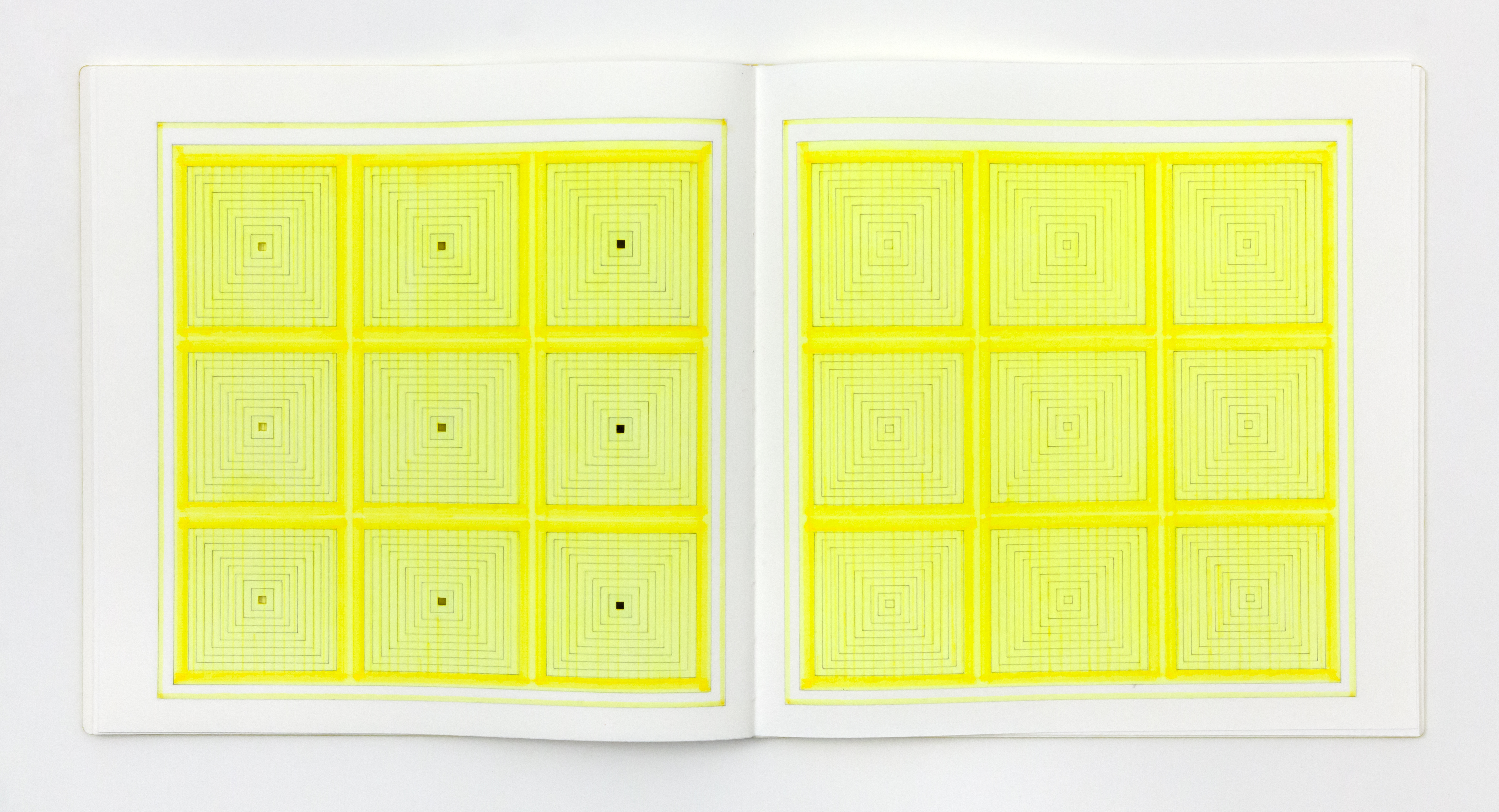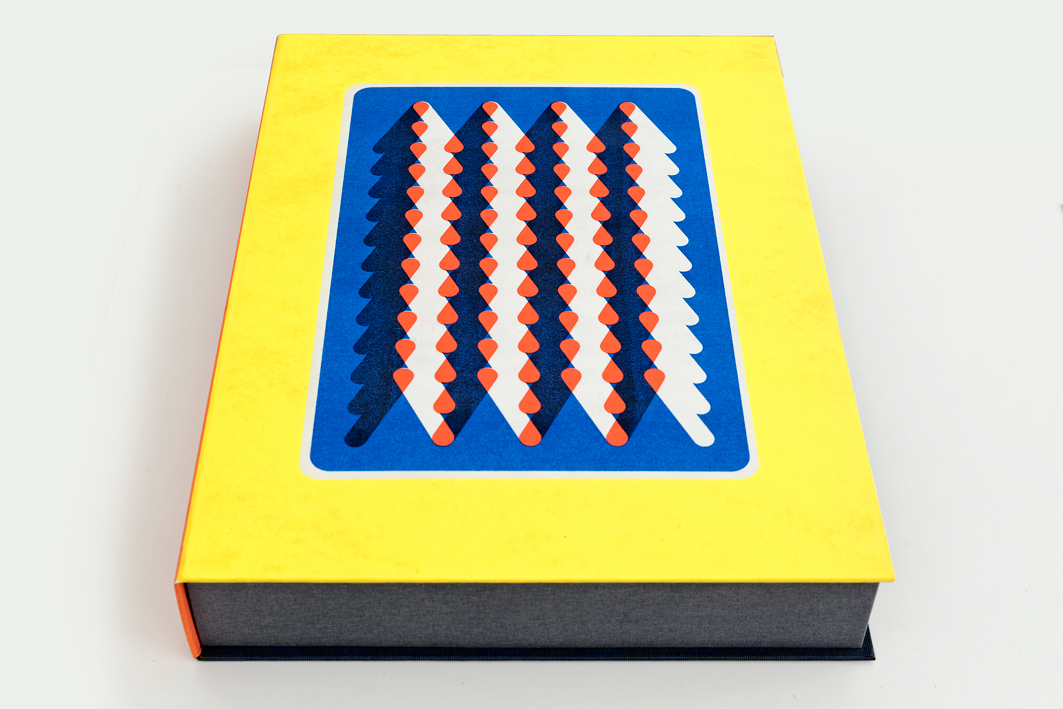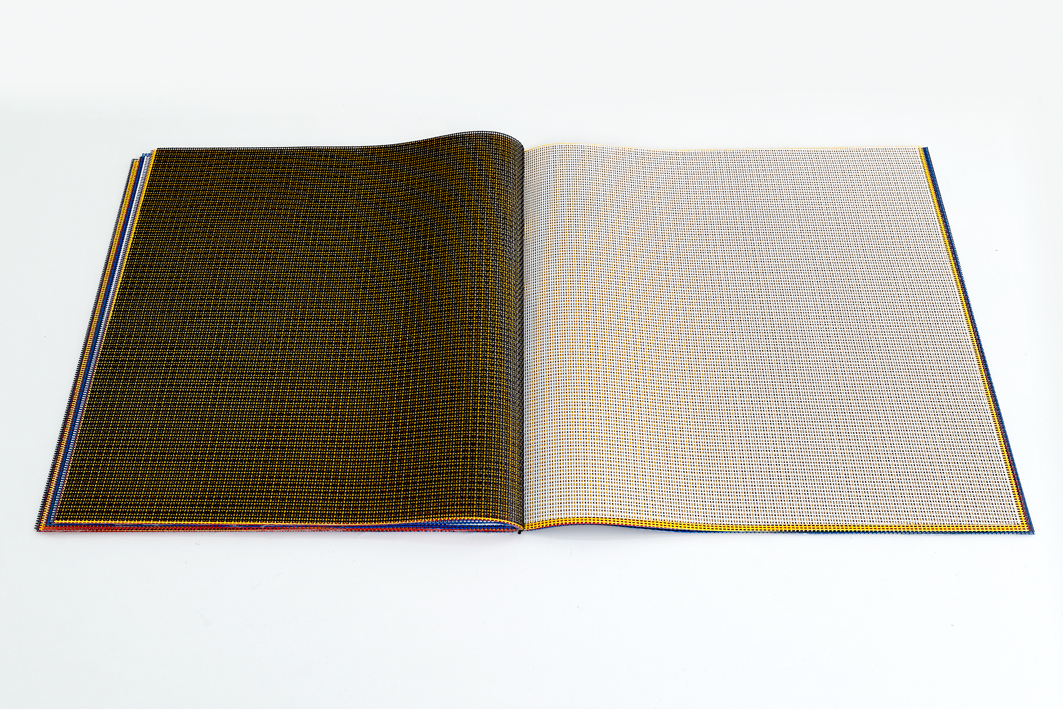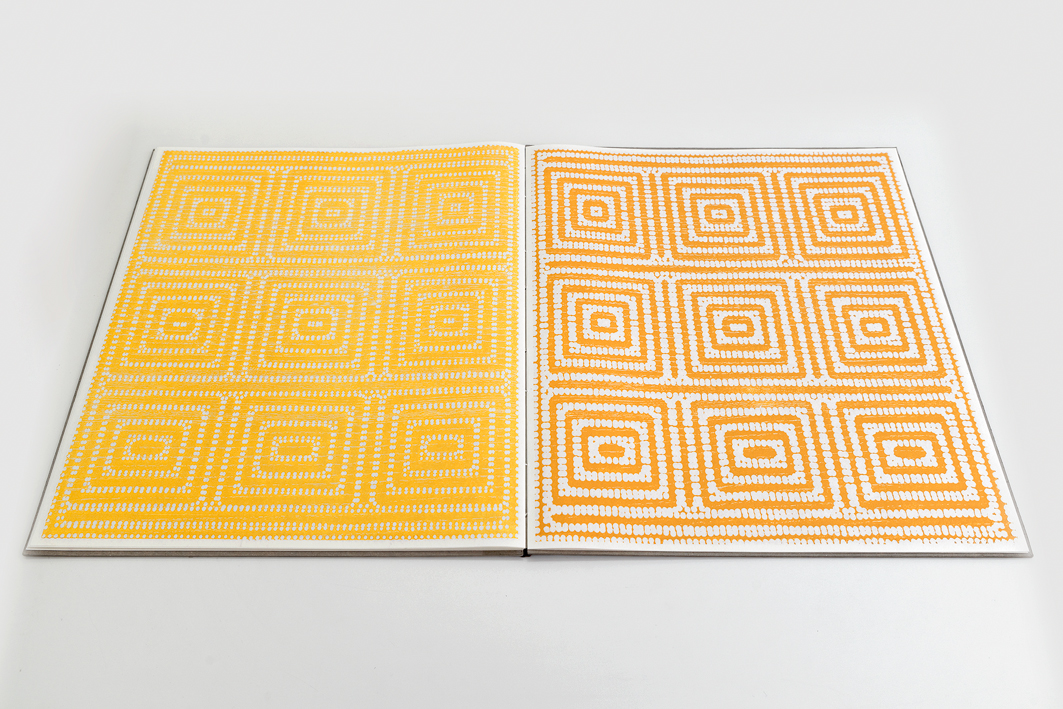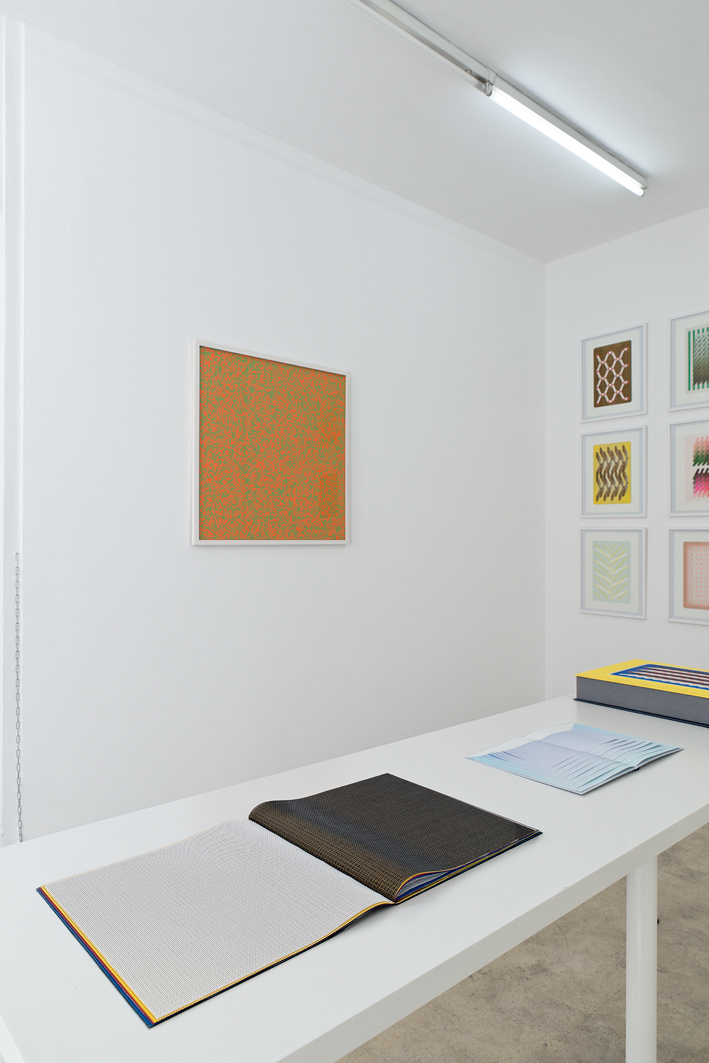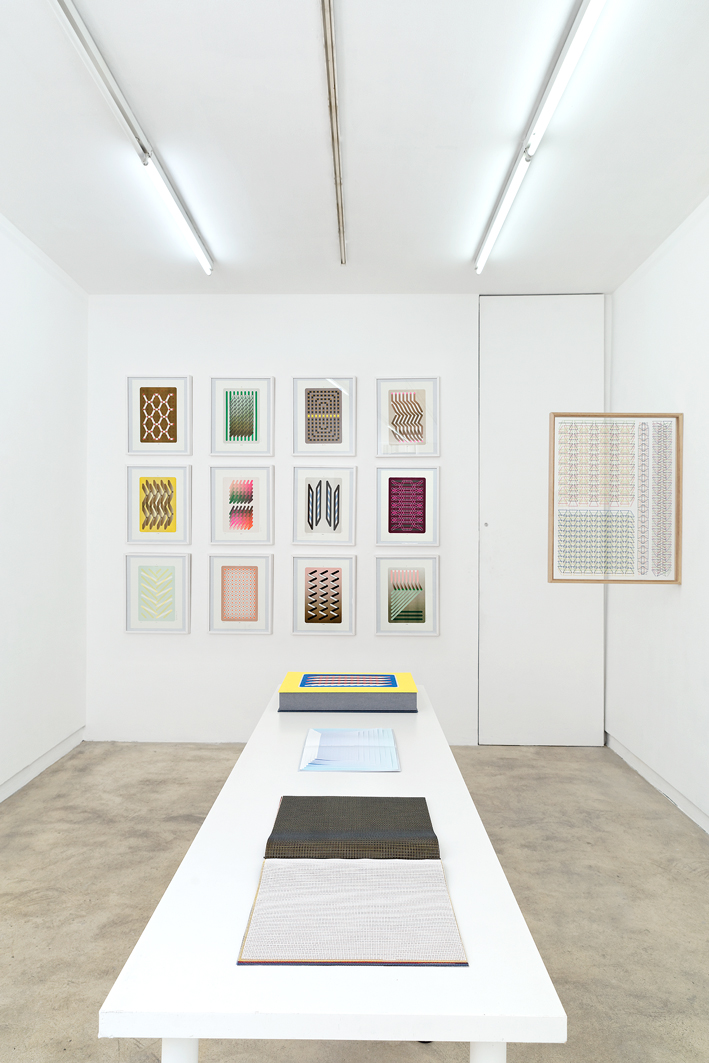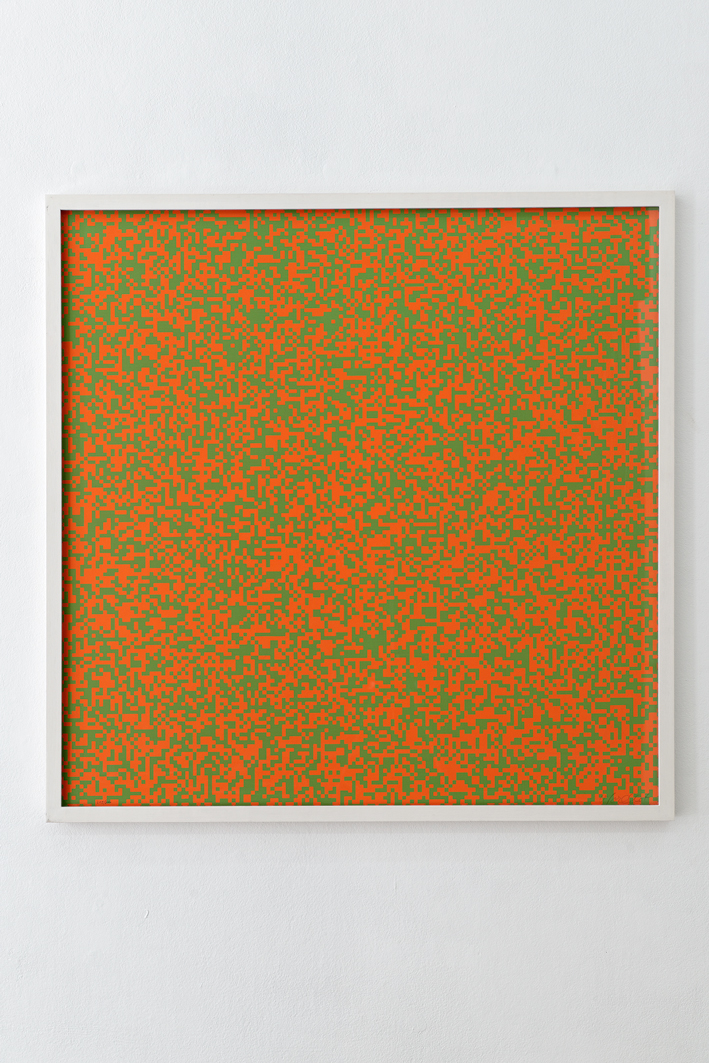L’exposition « Op & Post-op Editions » associe des éditions et des livres d’artistes confirmés et émergents.
L’appellation «Op art », qui trouve son origine dans l’abréviation de l’expression « optical art », s’impose en Europe dans les années 60. Ce mouvement artistique renoue avec l’abstraction géométrique en cherchant à créer des jeux optiques et des effets d’illusions pouvant s’inscrire à la surface de la rétine.
« 40.000 carrés » est une œuvre de François Morellet dont le titre s’apparente à un énoncé de géométrie. Membre du G.R.A.V. de 1961 à 1968, François Morellet s’est très vite affirmé comme un artiste abstrait géométrique. Néanmoins, il n’enferme pas son travail dans un cadre systématique étroit et la rigueur de sa démarche peut être modifiée par le hasard et la composition être soumise à l’aléatoire. Avec « 40.000 carrés », l’artiste part d’une grille régulière de carrés, de cases autrement dit, et d’un choix arbitraire de deux couleurs. En demandant à ses proches de lui dicter les chiffres de l’annuaire, l’artiste coche ses cases selon que la fin du numéro de téléphone est paire ou impaire ; il n’y a plus qu’à remplir les cases cochées d’une couleur, les cases vides de l’autre. Le principe à la fois numérique et binaire préfigure bien des œuvres que les artistes des décennies à venir obtiendront de leurs ordinateurs en agrandissant les pixels.
Depuis le début de sa carrière, Dan Walsh produit des livres d’artistes qui fonctionnent comme un champ d’expérimentation pour son travail pictural. L’artiste projette dans l’espace bi-dimensionnel du livre les préoccupations de son oeuvre peinte. Le livre, objet intime et tactile devient la surface à occuper, en jouant sur la séquence des pages il active différentes possibilités de séries ou progressions géométriques et chromatiques. Structurées par des lignes, des carrés concentriques ou autres traits orientant le regard, chaque page renouvèle l’expérience de la perception en une vibration méditative.
Philippe Decrauzat questionne les codes visuels de cette tradition abstraite léguée par les différents courants de l’abstraction géométrique et de l’Op art : fasciné par les effets optiques, il s’intéresse à la relation directe que l’art optique instaure avec le spectateur. Ici, un dyptique à la palette restreinte à un noir-blanc-gris obsédant combiné à des motifs simples qui animent l’image de tourments optiques.
Sigrid Calon est graphiste. S’inspirant des motifs de la broderie, elle édite en 2013 un livre To The Extend Of / \ | &, un volume réunissant 120 motifs tous basés sur les horizontales et les diagonales d’une trame de tapisserie. A partir de quelques règles simples, les lignes peuvent être répétées ou combinées de manière à en créer une plus longue, elles peuvent avoir ou non un contour, elles peuvent définir des formes ou au contraire des vides, se superposer pour former des couches, elle introduit alors les huit couleurs qu’offre la risographie afin d’ajouter profondeur et volume à ces incroyables grilles.
Tauba Auerbach, artiste de la scène émergente New Yorkaise questionne de manière inédite les thématiques fondamentales de l’Op art. Avec GHOST/GHOST elle combine lisibilité et abstraction, perméabilité et solidité au sein d’une surface unifiée, en verre sérigraphié. L’oeuvre, traversée par le regard, n’a plus ni face ni envers. L’image, en envoyant des informations contradictoires selon la place occupée par le spectateur, s’ouvre à d’autres dimensions.
The exhibition “Op & Post-op Editions” brings together emerging and established artists’ publications and books.
The term “Op art”, originating from an abbreviation of the expression “optical art”, became known in Europe from the 1960s. This artistic movement reunites with geometrical abstraction, in seeking to create optical games and illusory effects which can be imprinted on the retina’s surface.
As a founding member of the visual art research group (GRAV) in 1960, François Morellet has developed a major body of work in the field of geometrical abstraction. Nonetheless, behind the apparently rigorous aspect of his works, the artist plays with the rules of a game based on the absurdity of the simplest of conventions.
“40.000 carrés” is a work whose title appears to be inspired by a geometrical term. The artist starts off with a regular grid pattern made of squares and an arbitrary choice of two colours. Asking friends to dictate numbers from a telephone book to him, he ticks the boxes on the grid according to whether or not the telephone number ends with an odd or even number. All that is then left to do is to paint the ticked boxes with one colour and the empty ones with another one. This numerical and binary principle would prefigure artworks that artists in the following decades were to achieve with their computers by enlarging pixels.
Since the beginning of his career Dan Walsh has been creating artist books which operate as an experimental field for his own pictorial work. The artist projects preoccupations with his paintings in the two-dimensional space of the book. The book, an intimate and tactile object, becomes a surface to explore. By playing with the page sequence, he then triggers different possibilities for series or geometrical and chromatic progression. Each page, structured by lines, concentric squares or other traits which guide the eye, renews the experience of perception into a meditative vibration.
Philippe Decrauzat investigates the visual codes of this abstract tradition, passed on by the different movements of geometrical abstraction and Op Art. He is fascinated by optical effects and interested in the direct relation established between optical art and the viewer. Here, in a diptych restricted to a minimalistic palette of an obsessive black-white-grey, combined with simple patterns, animates the image into becoming an optical turmoil.
Sigrid Calon is a graphic designer. Inspired by embroidery patterns she edited a book in 2013, To The Extend Of / \ | &, a volume compiling 120 patterns, each of them based on the horizontal and diagonal lines of a weaved tapestry. Based on a few simple rules, the lines can be repeated or combined in order to create a longer one, they can be outlined or not, they can define shapes or blanks, they can overlap to create layers. She then introduces the eight colours permitted by the risography, in order to add depth and volume to these incredible grids.
Tauba Auerbach, an artist of the emerging New-York scene, questions the fundamental themes of Op art in an original manner.
With GHOST/GHOST she combines legibility and abstraction, permeability and solidity at the core of a unified surface, made of screen printed glass. The artwork penetrated by the viewer’s look, no longer has a front or back. The image, sends contradictory information to the viewer according to his or her vantage point, opening up new dimensions.
